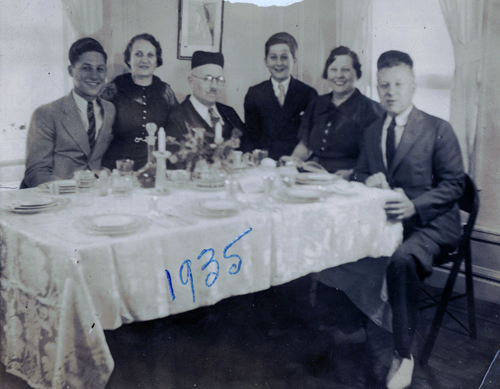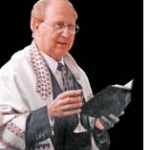
By Cantor Sheldon Merel

SAN DIEGO — I clearly remember the Seders I attended at the home of relatives during my Hebrew school days. I was proud to chant the “Ma Nishtana” and sing along in Hebrew. The group would sing the songs they knew, but talked most of the time. The conversation was not relevant to Passover while the leader was mumbling along through the Maxwell House Haggadah. The food was great, but the service dragged on into the night. In spite of this, for me, a child, it was fun to be with family and friends to celebrate Passover. Those Seders were an important part of my identification as a Jew.
For over 60 years Marcie and I delighted in hosting our own Seders and making the content relevant. A perfect example of this happened in the 1970s, when seated around our table were three immigrants: Katrina from Hungary, Felicia from Rumania, and Gregory a champion wrestler rejected from the Olympics by the Russian government because he was a Jew. They shared their dramatic and personal exodus experiences that brought new depth to our Seder and the biblical story.
A weird and funny coincidence occurred at one of our Seders. As the door was opened to welcome Elijah the prophet, there stood a non- Jewish friend of one of our sons about to ring the bell. Naturally he joined our Seder.
The Haggadah tells about our forefathers who changed the course of history: Abraham, Isaac, Jacob and Joseph. With this in mind, I replaced the story of the four sons who ask questions, and chose the opportunity to learn about individuals who have continued to make significant contributions to our people to this day. Some days before our Seder, I would ask four guests to prepare a brief description of people I suggested, or of their own choice. Some of those we learned about were: Raoul Wallenberg, Justice Louis Brandies, David Marcus, Chiune Sulghara, (Ambassador in Lithuania during WWII), Henrietta Szold, Admiral Hyman Rickover, Chaim Weitzman, Nathan Strauss, Uriah P. Levy, Theodore Herzl, Irene Sendler, and those who saved the Sarajevo Haggadah from the Nazis. This special education segment remained as a favorite part of our Seders.
Obviously, we sing a lot of traditional and some new songs. After we sing the familiar version of “Dayenu” I add a recent version with contemporary lyrics written by a colleague of mine: “If we stop a single death, and we do not banish war Dayenu, Dayenu…could this be enough?If we banish all pollution, and still let our children starve, Dayenu, Dayenu…could this be enough? If we put an end to hate, hunger, war, poverty…When we all understand what freedom really means, Dayenu, Dayenu, THIS would be enough!”
The search for freedom is the very essence of Passover and the Seder reminds us that the search should never end!
*
Preceding reprinted with permission from the Spring 2014 Beth Israel Quarterly. Beth Israel granted emeritus status to Cantor Sheldon Merel after twelve years of outstanding service as cantor of our congregation. He and his wife Marcie continue to be active members. During his illustrious career, Cantor Merel presented concerts of Jewish music, and was guest soloist with symphony orchestras throughout North America. Cantor Merel is a founding member of the American Conference of Cantors. The contemporary version of Dayenu, part of the oratorio Haggadah, Search for Freedom is on Cantor Merel’s CD, Standing Ovation. Further information and availability can found at www.Merel@merel.us.